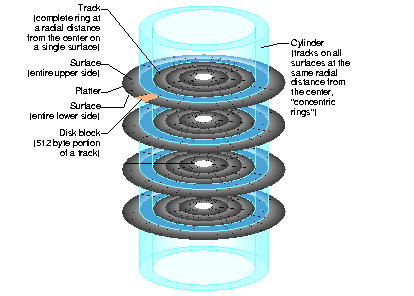

Figure 1-2 : Physical Disk Structure When the recording heads are at a particular position, the portions of the disk that can be read or written are called a cylinder. As shown in Figure 1-2, a cylinder is made up of rings on the upper and lower surfaces of all of the platters. The ring on one surface is called a track. Each track is divided into disk blocks (sometimes called sectors, these physical blocks on a disk are different from filesystem blocks). On SCSI disks, the number of disk blocks per cylinder may vary; outer cylinders may have more disk blocks than inner cylinders.
Formatting a disk divides the disk into tracks and disk blocks that can be addressed by the disk controller, writes timing marks, and identifies bad areas on the disk (called bad blocks). SCSI disk drives are shipped preformatted. They do not require formatting at any time. Bad block handling is performed automatically by SCSI disks. Bad blocks are areas of a disk that cannot reliably store data. Bad block handling maps bad blocks to substitute blocks that are in a reserved area of disk that is inaccessible by normal IRIX commands.